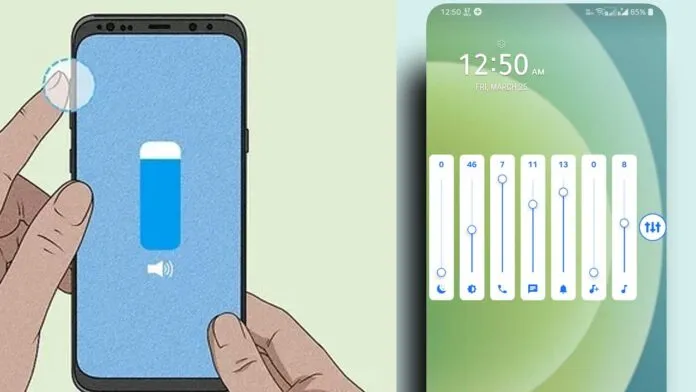Technology has continuously transformed our interactions with gadgets. A frequently neglected yet essential aspect of our daily routines is managing sound levels. Picture a scenario where you no longer need to press physical buttons but can use an app that makes this task effortless. This advancement offers a more seamless and intuitive way to adjust volume settings.
Simplifying Everyday Actions
Mobile devices aim to simplify our lives, but even minor tasks like adjusting the volume can occasionally feel awkward. Applications that offer an alternative to the physical volume buttons resolve this by providing on-screen controls. This straightforward fix improves user experience by making volume adjustments more accessible.
Also Read: Ultimate Data Sync App for Effortless Transitions
The Importance of Accessibility
Not everyone finds it easy to use a smartphone’s physical buttons. Some people have difficulty because of physical limitations or because the device’s buttons have become worn out. These applications offer a more accessible solution, enabling users to control volume through touch gestures, making devices more user-friendly for all.
Prolonging Device Longevity
Physical buttons on a smartphone are usually the first to exhibit wear and tear. Frequent use can lead to malfunction, and repairing these components can be expensive. A software-based solution provides a non-intrusive alternative, enabling users to keep their device’s hardware intact while still enjoying complete functionality.
A Seamless User Interface
A well-crafted volume control app integrates seamlessly with the smartphone experience. Its interface is typically straightforward to use, making it accessible even to those who aren’t tech-savvy. The app prioritizes ease of use while maintaining both functionality and visual appeal.
Personalized Control Options
Unlike standard volume buttons, apps provide tailored volume control options. Users have the flexibility to modify how the app reacts, enabling them to set precise increments or determine the speed of volume adjustment. This degree of customization is a capability that many physical buttons just don’t have.
Convenience at Your Fingertips
Picture having the ability to manage audio levels seamlessly while staying focused on what you’re doing. Sound control apps let you modify the volume without needing to touch your device or use any buttons. This kind of ease is perfect for moments when you need swift and subtle changes.
Reducing Accidental Button Presses
Standard volume controls are frequently pressed by accident, causing unexpected shifts in audio levels. For example, when a phone is inside a pocket or a bag, these buttons can be easily activated by mistake. Using an app, however, greatly minimizes this problem since volume changes demand intentional actions on the screen.
Multi-Device Compatibility
Volume control applications are not exclusive to smartphones. They frequently encompass tablets and other portable gadgets, delivering a seamless experience across different devices. Regardless of whether you’re on a phone or a larger device, these apps offer a uniform method to adjust audio settings without depending on the physical buttons of each device.
Empowering Device Customization
In today’s tech world, personalization is essential, and volume control apps play a significant role in this movement. They allow users to adjust their device’s audio settings to fit their individual preferences, offering a tailored experience. This customization capability distinguishes these apps from conventional approaches.
Enhancing Audio Management
Adjusting the volume isn’t merely a matter of increasing or decreasing sound levels; it’s about handling audio more intelligently. These applications frequently come with options that let users swiftly change between different audio settings or silence sounds completely. This flexible method offers greater adaptability than traditional physical buttons.
Saving Time and Effort
For individuals who often modify their device’s sound level, an app-based approach provides significant time efficiency. Rather than continuously pressing buttons to achieve the ideal setting, users can fine-tune the volume with greater ease. This simplified method minimizes the necessity for frequent physical adjustments.
A Future Without Hardware Constraints
As technology advances, we might see a day when physical buttons on mobile devices disappear completely. The move towards software-driven features, like volume control apps, suggests a future where ease of use and personalization are more important than hardware components. This change is already underway.

